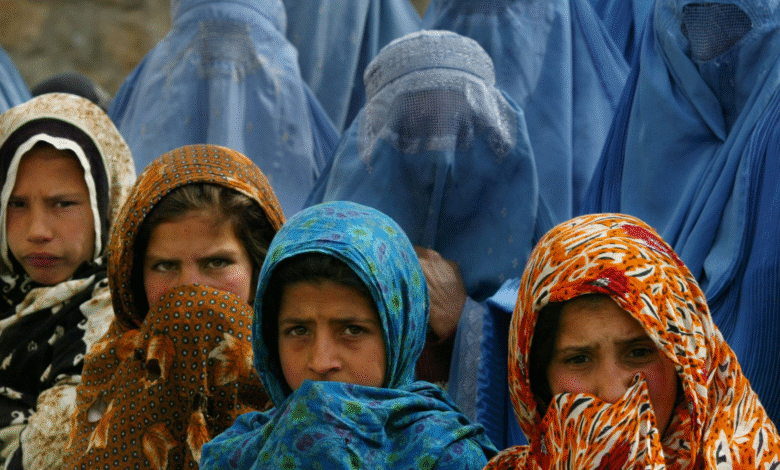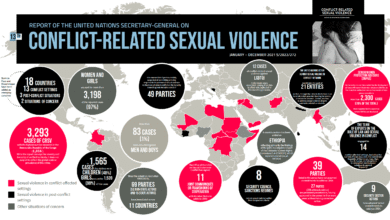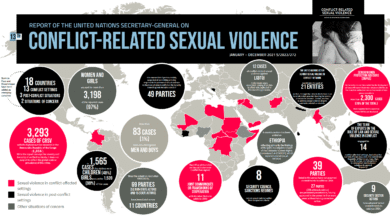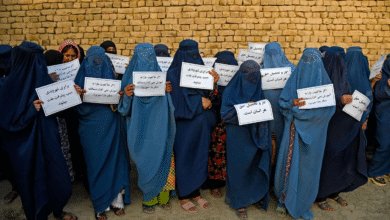Afghan Women: Facing Severe Exclusion and Inequality

Afghan women are enduring a harrowing reality characterized by severe socio-economic and political exclusion since the Taliban regained control in 2021. The systematic oppression has not only resulted in the absence of women in decision-making bodies, but it has also led to a catastrophic ban on girls’ education, which prevents them from pursuing secondary schooling. This stark gender inequality in Afghanistan is fueled by policies that marginalize half the population, severely hindering progress towards Afghan women’s rights. With a reported 76 percent gender gap in various sectors, the plight of Afghan women extends beyond mere academic exclusion; it encapsulates a broader struggle for dignity and basic human rights. The international community must recognize and address the impact of the Taliban on women, acknowledging the resilience of Afghan women who, despite unimaginable adversity, continue to seek their rightful place in society.
The state of women in Afghanistan paints a troubling picture of gender disparity and social unrest. Faced with institutionalized discrimination and a longstanding history of gender inequality, females in this region are grappling with the consequences of systemic exclusion. Education for Afghan girls has effectively been erased from the agenda, and the repercussions can be felt across all aspects of life. The efforts of these brave women—who strive to advocate for their rights despite overwhelming challenges—highlight a resilience that must not be overlooked. This situation calls for urgent attention from the global community to support Afghan women in reclaiming their rights and rebuilding their futures.
The Grim Reality of Gender Inequality in Afghanistan
In Afghanistan, the landscape of gender inequality has reached alarming levels, particularly since the Taliban regained control in 2021. Recent reports indicate that there are currently zero women in decision-making bodies and a complete ban on girls’ participation in secondary education. The systematic exclusion faced by Afghan women and girls demonstrates the dire straits of gender equality, further exacerbated by zero projected involvement in national governance. These restrictions represent a conscious effort to undermine the rights and potential of women in the country, further entrenching a culture of gender inequality that has persisted for generations.
The implications of these statistics extend beyond mere representation; they reflect a society structured to limit women’s rights and opportunities at every level. The UN Women’s report emphasizes that the gap in women’s and men’s achievements is staggering, indicating a profound lack of access to health, education, and economic participation. With only 24% of women participating in the labor force compared to 89% of men, it is clear that much needs to be done to rectify these disparities. Women’s exclusion from critical societal roles not only stagnates progress but also perpetuates cycles of poverty and instability, undermining the potential for growth and development in Afghanistan.
The Systematic Exclusion of Afghan Women
Afghan women’s systemic exclusion is indicative of a larger structural issue within society. The layers of discrimination they face are neither new nor solely a product of the Taliban’s rule. Historical barriers have long prevented them from participating equally in education, the workforce, and governance. As highlighted by UN Women’s Executive Director, Sima Bahous, Afghan women represent the country’s greatest untapped resource. Their exclusion impedes not only their personal progress but also the national advancements toward fulfilling the Sustainable Development Goals.
This systematic exclusion leads to dire economic consequences, as the potential of half the population remains disregarded. The movement of women into the labor force has been predominantly for survival rather than empowerment. Though many women are increasingly entering the workforce due to necessity, they often find themselves in precarious, low-paying jobs, or are responsible for unpaid domestic work. The ongoing crises further complicate this environment, suggesting that until Afghan women’s rights are addressed, true progress and stability are unlikely.
Advocacy and Resilience of Afghan Women
Despite the overwhelming challenges, Afghan women continue to demonstrate resilience and determination in advocating for their rights. Even amid oppressive conditions, they find ways to run businesses and mobilize for change. Their leadership and courage send a powerful message about the spirit of Afghan women who, against all odds, are committed to improving their situation and those of their daughters. The stories of these women encapsulate a struggle that transcends geographical borders, highlighting the universal need for women to be empowered and included in all societal aspects.
Organizations and global players have a critical role to play in amplifying these voices and providing support. As the world watches, it is essential to recognize and respond to the perseverance of Afghan women by offering advocacy, funding, and educational support. The commitment shown by local women to continue their fight for rights serves as a crucial reminder of the importance of gender equality in fostering a just society. Efforts to support Afghan women must be underscored, ensuring their visibility and acknowledgment in all humanitarian responses.
The Impact of Taliban Control on Women’s Rights
Since the Taliban’s return to power, the erosion of women’s rights has been swift and severe, marking a regression in gender equality in Afghanistan. Bans on education and participation in public life serve as stark reminders of the obstacles faced by Afghan women and highlight the impact of oppressive governance on their lives. The abolishment of educational opportunities for girls is particularly devastating, as education serves as a foundational pillar for empowerment and future opportunities. The implications of such a ban extend beyond schooling; it sets a precedent for further exclusion and marginalization.
Furthermore, the policies adopted under the Taliban regime have had deleterious effects on the psyche and wellbeing of Afghan women. The increasing movement restrictions, alongside societal intimidation, perpetuate a culture of fear and silence among women. They are forced to navigate a challenging landscape where basic rights are constantly under threat. The international community must act to hold the Taliban accountable for their actions and advocate for the reinstatement of Afghan women’s rights. Together, a global stance on this issue can illuminate the need for urgent change and encourage efforts that promote equality.
Education as a Fundamental Right for Afghan Girls
Education has long been recognized as a fundamental right and a powerful catalyst for social change. However, for Afghan girls, this right has been severely compromised in recent years, particularly following the Taliban’s ban on secondary education. This exclusion from education not only robs girls of knowledge and skills but also perpetuates cycles of poverty and inequality within families and communities. By denying young women the chance to learn, the future of an entire generation is jeopardized, leaving them ill-equipped to contribute to society as active and empowered citizens.
The urgent need for educational reforms and initiatives aimed at supporting Afghan girls has never been clearer. International organizations and local advocates must rally to create safe and conducive learning environments that prioritize the rights of girls to pursue their education. This encompasses not only formal schooling but also vocational training and initiatives that encourage girls to remain in school despite societal pressures. Education for Afghan girls is not just a matter of individual rights; it is an investment in the nation’s future and a necessary step toward achieving broader gender equality.
The Societal Impact of Women’s Exclusion
The systemic exclusion of women from various societal roles has far-reaching effects on the overall fabric of Afghan society. This marginalization not only impacts the individual women but also stifles progress in various sectors, including economic development, health, and political stability. With restrictions in place, women cannot assume roles that contribute to the national economy, leading to a loss of potential innovation and growth. The underutilization of women’s talents prevents diversity of thought and solutions needed to address complex societal challenges.
Additionally, when women are denied opportunities for engagement and leadership, it reinforces a cycle of poverty and disenfranchisement. Families suffer in terms of income and stability, which ultimately affect children’s health, education, and future prospects. The societal costs of women’s exclusion from critical roles cannot be overstated, as it inhibits overall progress and development. The long-term implications require urgent attention and a concerted effort to empower Afghan women, thereby allowing them to partake fully in the rebuilding and reimagining of their nation.
The Global Response to Afghan Women’s Rights
The international community has a vital responsibility to respond to the ongoing crisis of women’s rights in Afghanistan. As the situation deteriorates, solidarity and support for Afghan women must be prioritized within humanitarian responses. Increased funding and actionable commitments toward gender equality can send strong signals to both Afghan women and their oppressors. Mobilizing resources to safeguard women’s rights and wellbeing should not merely be viewed as an obligation but as a moral imperative necessary for human dignity.
Global awareness and advocacy surrounding the plight of Afghan women is critical in holding the Taliban accountable for their policies. By amplifying their stories and struggles, the world can bring attention to the urgent need for systemic change. Many organizations and activists advocate for humanitarian interventions that address the immediate needs of women and girls, including access to education and health services. This response should extend beyond mere aid; it must foster resilience and provide Afghan women the tools and support they need to reclaim their rights and reshape their futures.
Future Prospects for Afghan Women’s Rights
The future of women’s rights in Afghanistan remains uncertain, heavily dependent on both internal dynamics and international advocacy. As Afghan women continue to face unprecedented levels of discrimination and exclusion, it is crucial to remain steadfast in the pursuit of justice and equality. While current policies may appear insurmountable, history has shown that progress is possible when there is a unified effort for change. The resilience of Afghan women, coupled with targeted international support, can create a roadmap for revitalizing women’s rights and fostering a culture of equality.
Long-term prospects for Afghan women’s rights hinge on sustained global interest and action. Ongoing advocacy for the reformation of oppressive policies is necessary to ensure that Afghan women can reclaim their rights and participate fully in society. Building educational programs, improving access to healthcare, and enabling their empowerment can lay the foundation for a brighter future. Together, with continued pressure and dialogue, there remains hope that Afghan women’s rights will see significant transformation, leading to a more equitable and prosperous society.
Frequently Asked Questions
What are the current challenges faced by Afghan women in terms of education?
Afghan women are facing severe challenges in education, particularly following the Taliban’s ban on girls accessing secondary schools in December 2024. This has led to a projection of zero girls continuing their education beyond primary school, significantly impacting their future opportunities. Education for Afghan girls has experienced a dramatic decline, as they were previously making strides in academic participation, which now stands at an alarming halt.
How has the Taliban’s rule affected Afghan women’s rights?
The Taliban’s rule has had a devastating impact on Afghan women’s rights, resulting in unprecedented gender inequality. Since regaining control in 2021, they have implemented policies that systematically exclude women from public life, including a complete absence of women in decision-making bodies and restrictions on their mobility and education. This has contributed to Afghanistan holding the second-worst gender gap in the world, severely undermining the progress made prior to their takeover.
What is the current status of gender inequality in Afghanistan?
The current status of gender inequality in Afghanistan is dire, with women realizing only 17% of their potential across various sectors such as health, education, and decision-making. The UN Women’s index indicates a 76% disparity between the achievements of women and men, exacerbated by institutionalized discrimination that predates the Taliban. Both economic and political crises compound these challenges for Afghan women.
How are economic conditions impacting Afghan women?
Economic hardship in Afghanistan has forced more women to enter the labor force, yet they predominantly occupy lower-paid and insecure jobs. Currently, only 24% of women participate in the labor market compared to 89% of men. However, the dire situation in households, amid overlapping crises, continues to push Afghan women into work, despite the systemic barriers they face in achieving financial independence and equality.
What role do Afghan women play in advocating for their rights?
Despite the harsh restrictions imposed by the Taliban, Afghan women continue to show remarkable resilience and courage. They are advocating for their rights and finding innovative ways to operate businesses and support their families. Their ongoing efforts serve as a critical force in the fight for Afghan women’s rights, demonstrating their determination to persevere against all odds.
Why is international support crucial for Afghan women amid the current crisis?
International support is vital for Afghan women, especially as they face worsening humanitarian conditions. Donor funding can significantly impact the essential services required for women and girls, including education and healthcare. With only 18% of the 2025 humanitarian response plan funded, the lack of aid threatens to undermine their basic rights and exacerbates existing inequalities, making it imperative for the global community to support Afghan women’s needs.
| Key Point | Details |
|---|---|
| Social and Political Exclusion | Afghan women and girls face total exclusion from decision-making and education. |
| UN Women Report | The report highlights a 76% gender gap in achievements across various sectors and the systematic oppression of women under the Taliban. |
| Limited Workforce Participation | Only 24% of women are part of the labor force compared to 89% of men. |
| Economic Impact | Ongoing crises push women into the workforce but often in insecure and lower-paid positions. |
| Aid Shortage | Only 18% of the humanitarian response plan for 2025 is funded, affecting women’s health and safety services. |
Summary
Afghan women face severe challenges and near-total exclusion from social, economic, and political spheres. Despite significant barriers, they continue to strive for their rights and advocate for their worth in society. The ongoing crises in Afghanistan underscore the urgent need for global support and action to address their plight and to ensure that the rights of Afghan women are protected and prioritized in humanitarian efforts.




